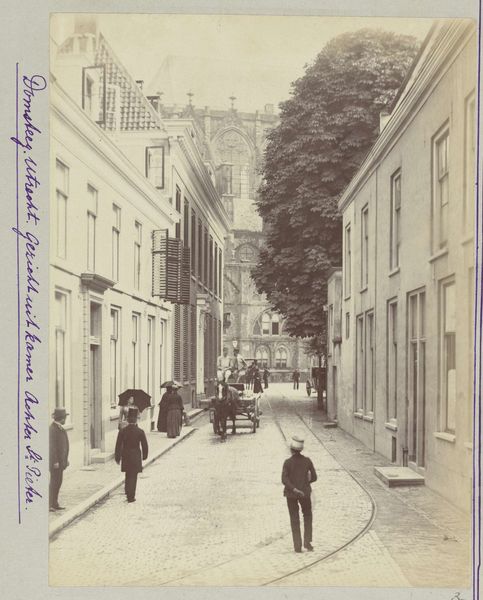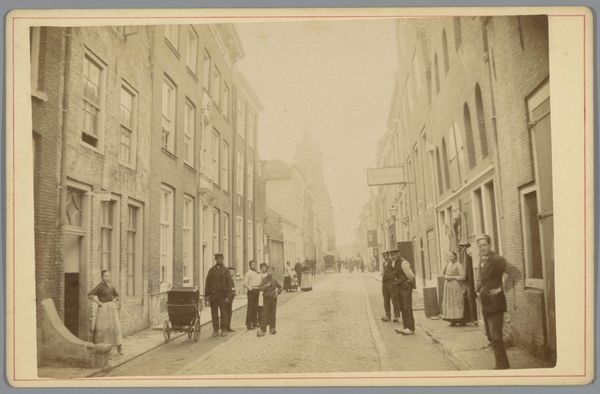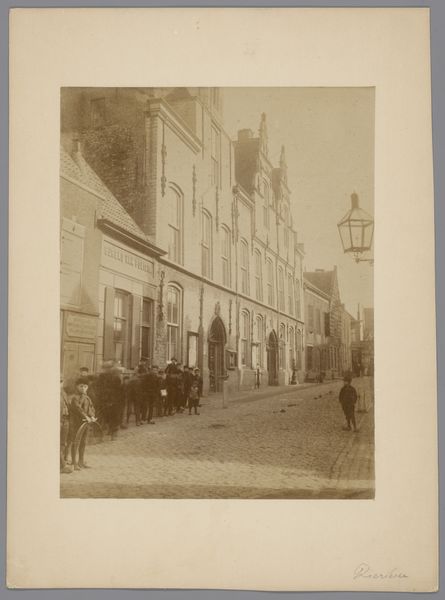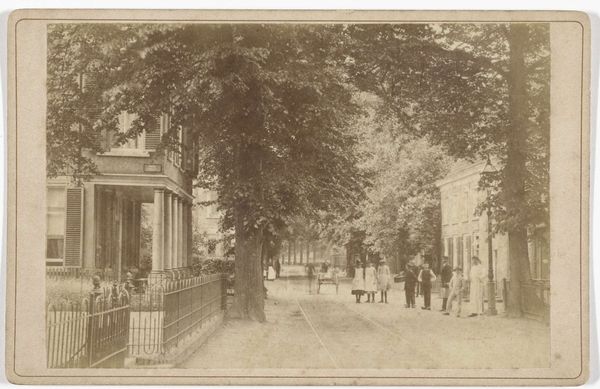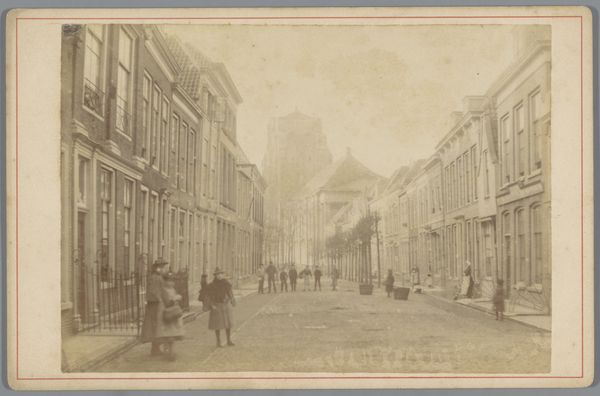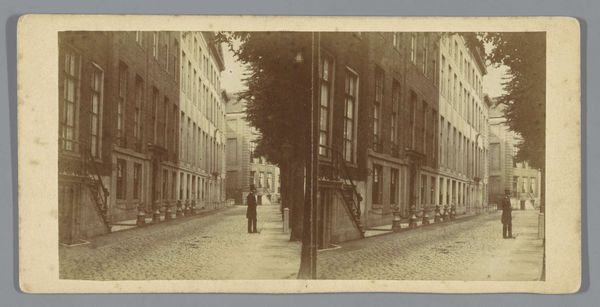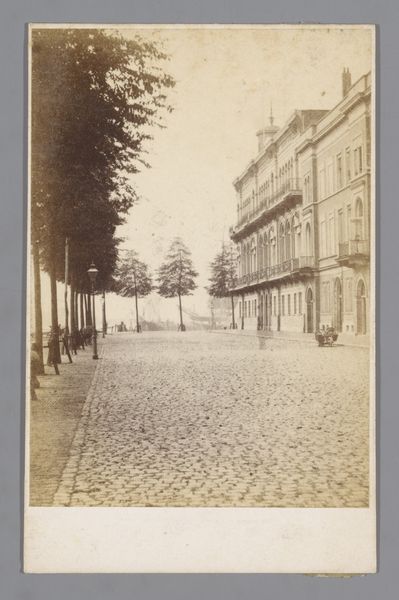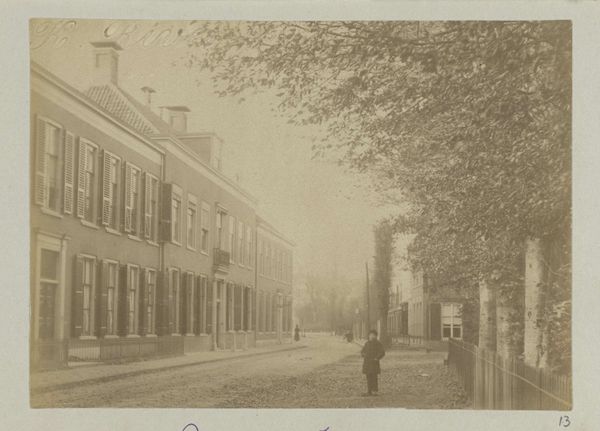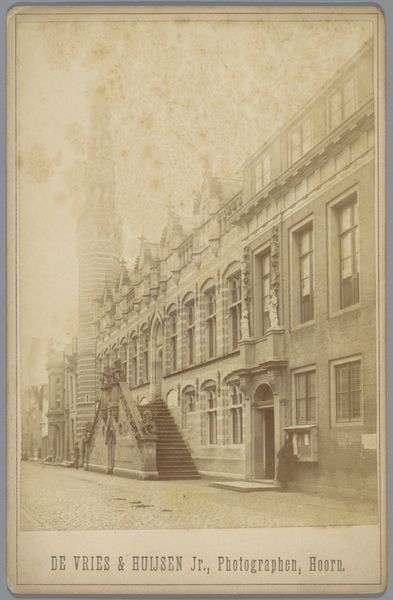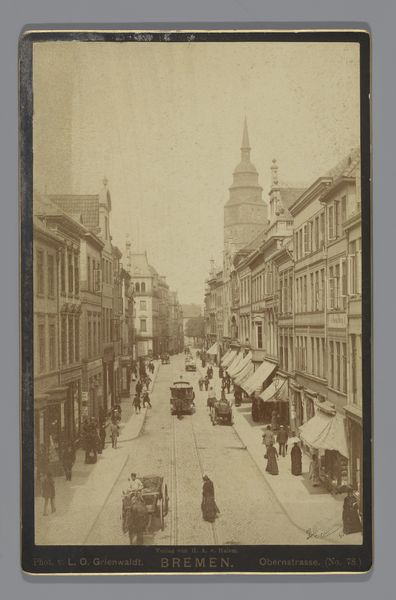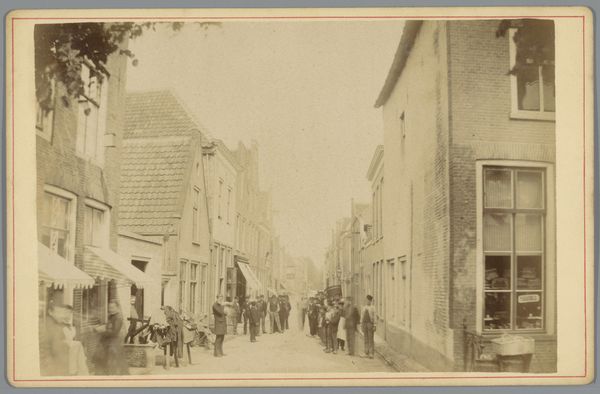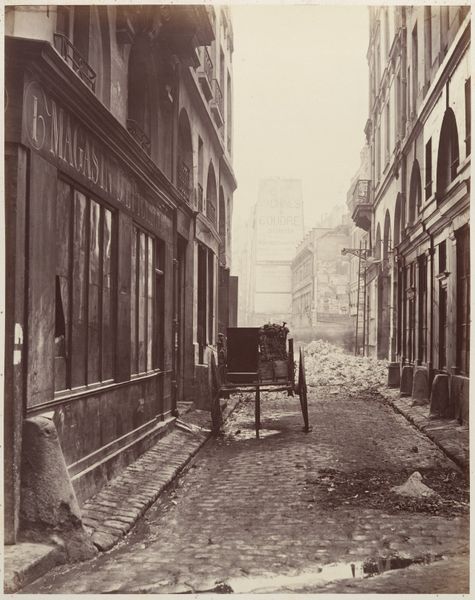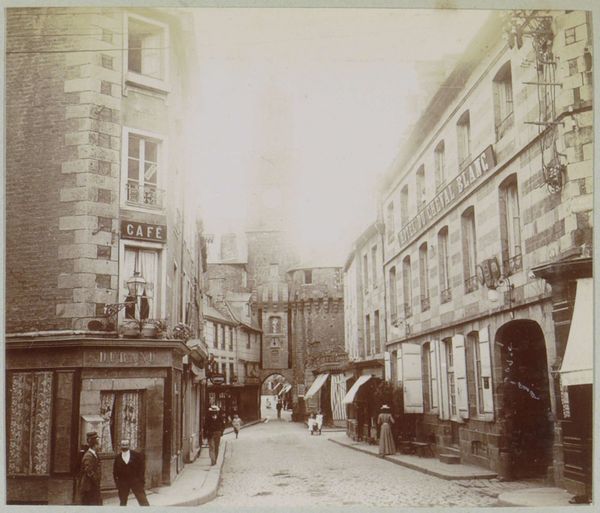
photography, gelatin-silver-print
#
street-photography
#
photography
#
gelatin-silver-print
#
cityscape
#
realism
Dimensions: height 172 mm, width 122 mm, height 302 mm, width 250 mm
Copyright: Rijks Museum: Open Domain
Curator: Good morning, I’m delighted to be discussing this atmospheric photograph with you. The work is titled "Domstraat in Utrecht," captured by Henry Pauw van Wieldrecht around 1888, crafted using the gelatin-silver print method. You can find it here at the Rijksmuseum. Editor: Well, hello! It’s got that gorgeous hazy, sepia-toned dreaminess, doesn’t it? Makes me think of foggy memories or maybe a play that is just starting. A simple, charming Dutch street bathed in a very diffused, soft light. Curator: Exactly! Pauw van Wieldrecht was known for documenting daily life in the Netherlands. What stands out to me is the clear class divisions. Note the smartly dressed individuals strolling casually alongside what seems to be a postman making his deliveries. And of course, someone enjoying a bike ride down the road. This reflects a very specific segment of society. Editor: That is true, but look how the composition almost equalizes them! Everyone is neatly contained in that narrow street. The slight blur almost obscures specific details – it softens those boundaries. It feels very intentional, almost cinematic, if I can say. What are your feelings? Curator: In regards to its cinematic appeal, these early photographers understood their work had a civic mission. The question becomes: How do they capture a public identity and also manage a composition that reflected both the grand structures alongside an intimate peek into city life? Editor: Right. But, the street, the Dom tower looming subtly at the end, I see it all with almost a sense of melancholy, and maybe... nostalgia for a world that’s vanished, you know? Though I wasn’t there in 1888, this photograph connects me with a feeling, an almost forgotten existence of daily Dutch life. Curator: The fascinating part of this realism in the photograph lies in the idea that even everyday people can become worthy subjects. I think that the beauty resides in those contrasts between permanence and change. It becomes about time— capturing a fleeting, changing moment in an eternal medium, no? Editor: That's great! Now it just made me a little happier. It just highlights the power of art – it really changes how we see the present by framing those moments in the past. Curator: I concur, capturing this everyday image provides so many fascinating social markers—making us reconsider both photography and history as connected enterprises.
Comments
No comments
Be the first to comment and join the conversation on the ultimate creative platform.
